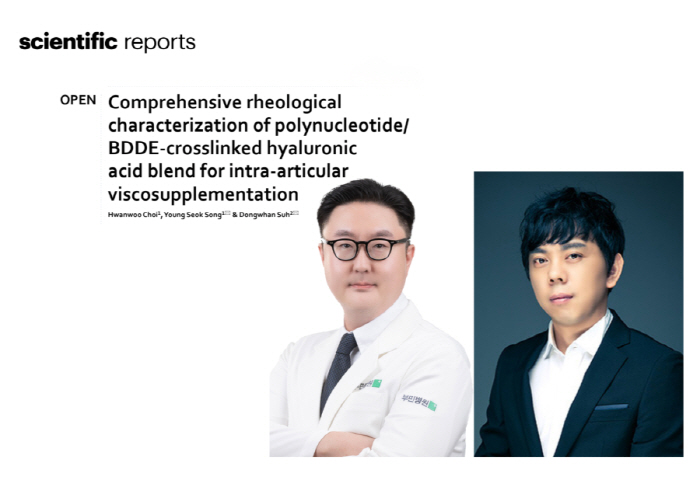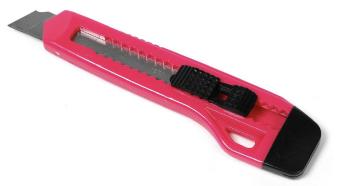A research team from Bumin Hospital and Dankook University announces the analysis results of the knee joint injection mixture
Nov 11, 2025
A joint research team from Seoul Bumin Hospital and Dankook University published the results of a scientific analysis of key ingredient combinations of arthritis treatment injections in the October 2025 issue of Scientific Reports, a sister journal of Nature.
Hyaluronic acid 'Kelone Injection', which is widely used for knee arthritis patients, is a representative treatment to reduce joint friction and relieve pain, and it helps to reduce friction and absorb shock by injecting highly viscous substances into the joints.
However, the existing hyaluronic acid formulation was rapidly decomposed in the body, and the effect did not last long.
To improve this, chemically coupled cross-linked hyaluronic acid was developed, but while viscosity was improved, there was still room for improvement in terms of long-term stability and viscoelasticity (the property that looks viscous and elastic when deformed).
In addition, the physical properties of mixing these ingredients have not been properly studied.
To overcome these limitations, a research team led by Dr. Seo Dong-hwan of the Seoul Bumin Hospital Artificial Joint Center and Professor Song Young-seok of Dankook University systematically analyzed the physical properties of the new combination polynucleotide and cross-linked hyaluronic acid (PN/BDDE-HA) complex for the first time in the world.
The research team conducted simple shear (viscosity change of each material), vibration shear (balance evaluation of elasticity and viscosity), and three-stage tixotropics (measuring the speed at which the structure recovers after collapsing) at the average temperature (31.4℃) of the actual knee joint.
Experiments show that polynucleotides and cross-linked hyaluronic acid composites (PN/BDDE-HA) have simultaneously secured superior viscosity, elasticity, and structural stability over conventional hyaluronic acid and cross-linked hyaluronic acid.
In particular, the possibility of continuing lubrication and shock absorption functions for a long time has been proven due to its high shape retention even in repeated load environments.
Professor Song Young-seok of Dankook University's Polymer System Engineering Department, who led the study, emphasized that "This study will provide basic data for future clinical application, while leading to the development of better formulations through optimization of composition ratio and physical properties.'
Dr. Seo Dong-hwan of Seoul Bumin Hospital said, `The combination or combination of polynucleotide and cross-linked hyaluronic acid is expected to compensate for the shortcomings of existing injection therapy and increase long-term durability, anti-inflammatory effect, and tissue regeneration possibility.'
This study is a representative achievement created through the convergence of domestic clinical medicine and material engineering, and it is expected to provide a longer-term and more effective pain relief solution to knee arthritis patients in the future.
Hyaluronic acid 'Kelone Injection', which is widely used for knee arthritis patients, is a representative treatment to reduce joint friction and relieve pain, and it helps to reduce friction and absorb shock by injecting highly viscous substances into the joints.
However, the existing hyaluronic acid formulation was rapidly decomposed in the body, and the effect did not last long.
To improve this, chemically coupled cross-linked hyaluronic acid was developed, but while viscosity was improved, there was still room for improvement in terms of long-term stability and viscoelasticity (the property that looks viscous and elastic when deformed).
In addition, the physical properties of mixing these ingredients have not been properly studied.
To overcome these limitations, a research team led by Dr. Seo Dong-hwan of the Seoul Bumin Hospital Artificial Joint Center and Professor Song Young-seok of Dankook University systematically analyzed the physical properties of the new combination polynucleotide and cross-linked hyaluronic acid (PN/BDDE-HA) complex for the first time in the world.
The research team conducted simple shear (viscosity change of each material), vibration shear (balance evaluation of elasticity and viscosity), and three-stage tixotropics (measuring the speed at which the structure recovers after collapsing) at the average temperature (31.4℃) of the actual knee joint.
Experiments show that polynucleotides and cross-linked hyaluronic acid composites (PN/BDDE-HA) have simultaneously secured superior viscosity, elasticity, and structural stability over conventional hyaluronic acid and cross-linked hyaluronic acid.
In particular, the possibility of continuing lubrication and shock absorption functions for a long time has been proven due to its high shape retention even in repeated load environments.
Professor Song Young-seok of Dankook University's Polymer System Engineering Department, who led the study, emphasized that "This study will provide basic data for future clinical application, while leading to the development of better formulations through optimization of composition ratio and physical properties.'
Dr. Seo Dong-hwan of Seoul Bumin Hospital said, `The combination or combination of polynucleotide and cross-linked hyaluronic acid is expected to compensate for the shortcomings of existing injection therapy and increase long-term durability, anti-inflammatory effect, and tissue regeneration possibility.'
This study is a representative achievement created through the convergence of domestic clinical medicine and material engineering, and it is expected to provide a longer-term and more effective pain relief solution to knee arthritis patients in the future.
|
This article was translated by Naver AI translator.














